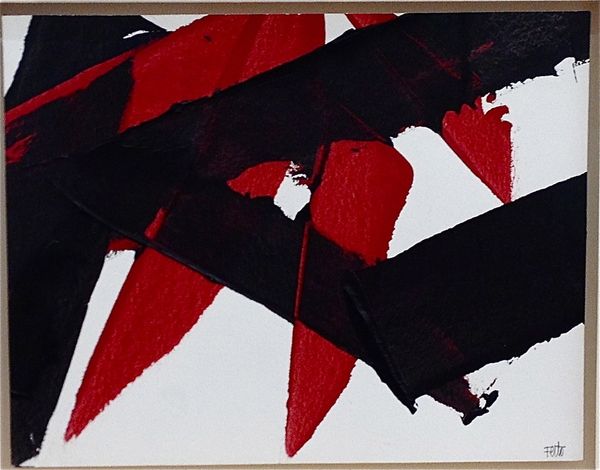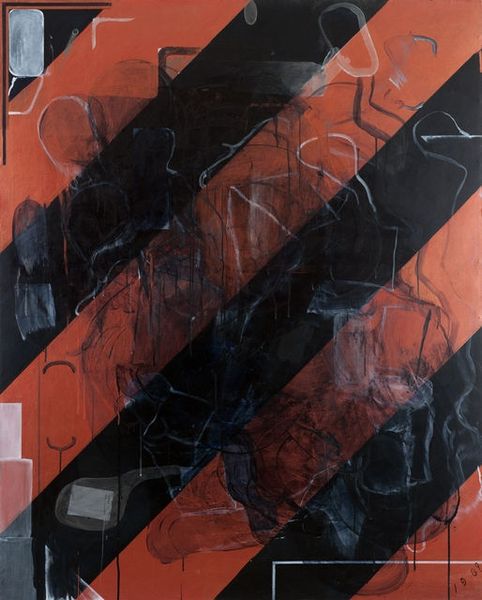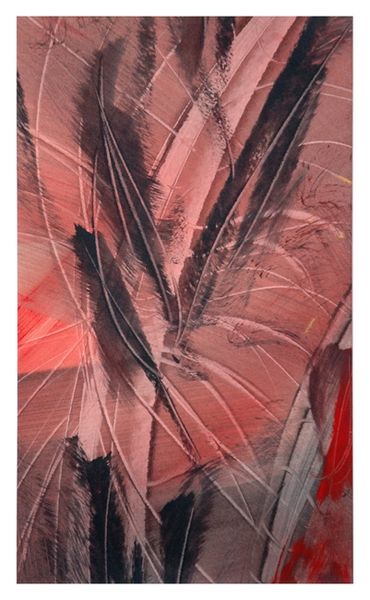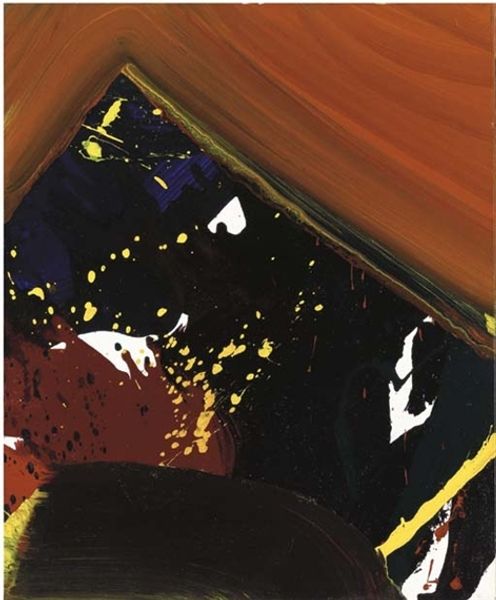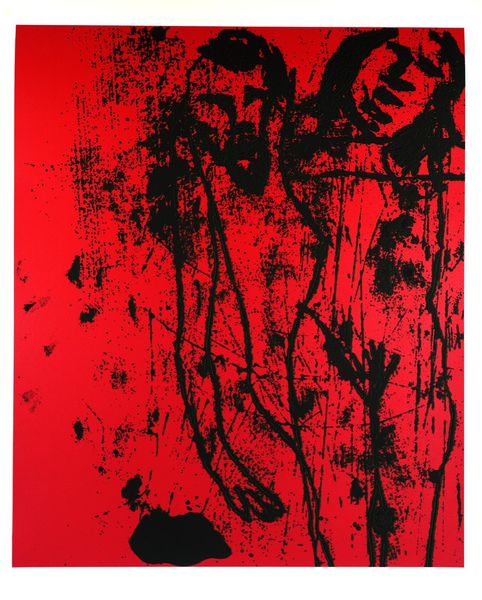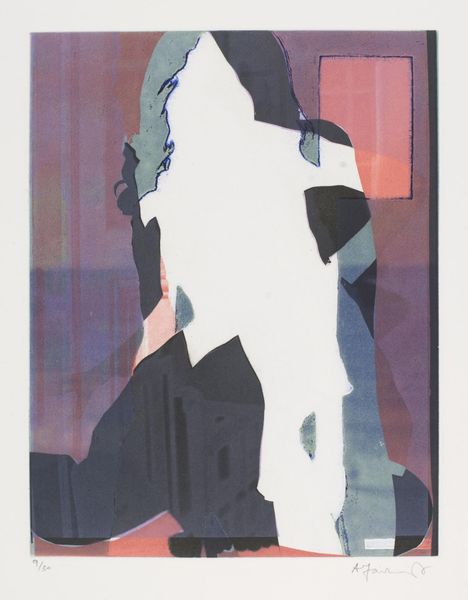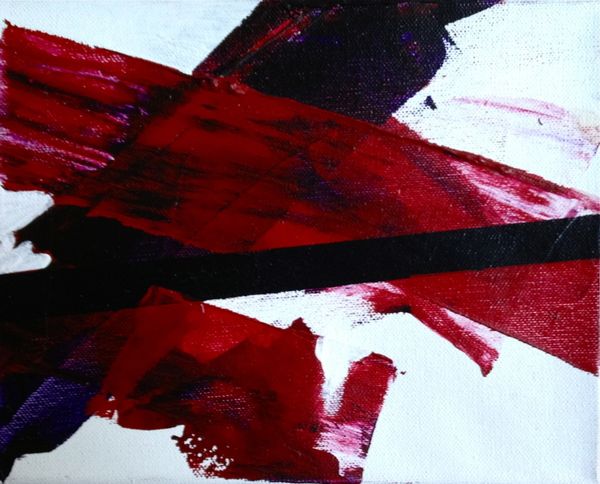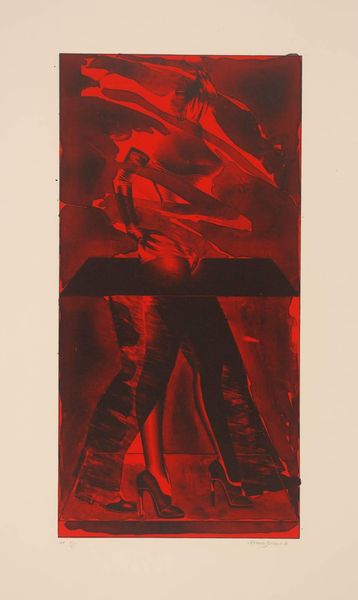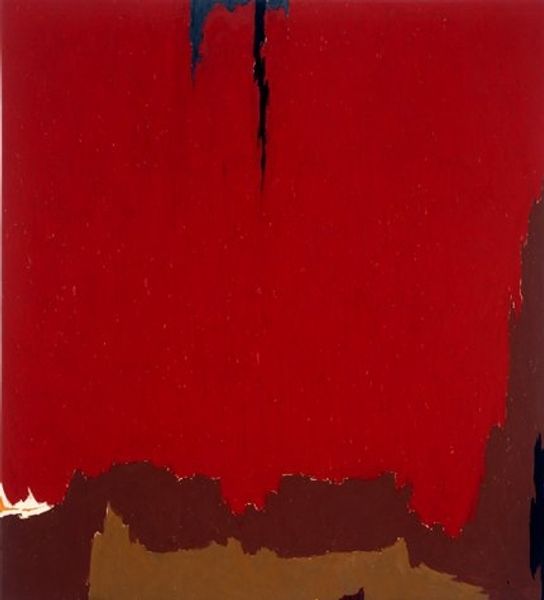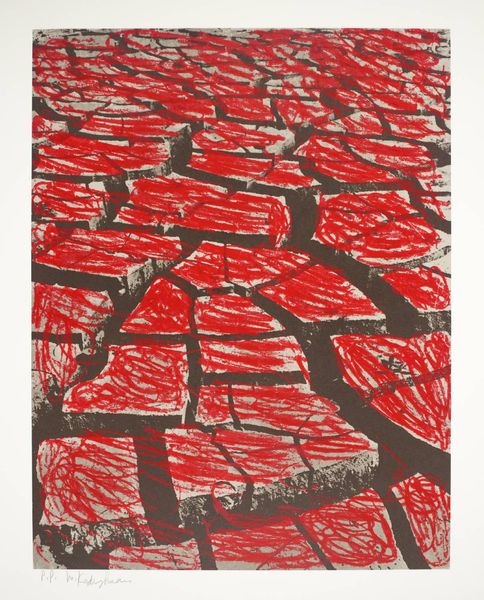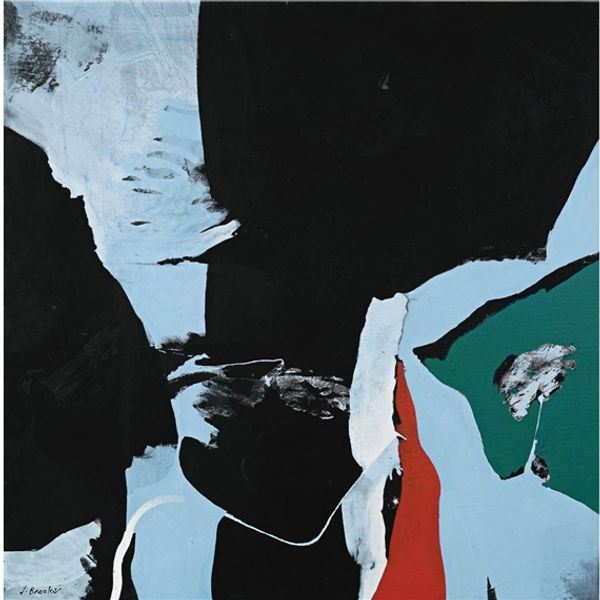
Copyright: Luis Feito,Fair Use
Curator: This acrylic on canvas from 2007 is simply called "Untitled" and it comes to us from the Spanish artist, Luis Feito. Editor: Immediately striking, isn't it? The stark contrast of deep blacks and vibrant reds over that clean white canvas really punches you in the gut. The sheer angularity of the shapes create a palpable sense of tension. Curator: Indeed. Feito’s abstract expressionism evolved through the politically charged atmosphere of Franco’s Spain. There's a constant dialogue in his work between form and the silent screams of societal repression. How do you see the formal interplay relating to potential hidden narratives? Editor: The black masses seem to be aggressively slicing through the red fields—a visual disruption, an interruption. One might interpret it as constraint fighting against passion, but, of course, that's a fairly textbook interpretation. The sharp lines and blocks certainly create division. Curator: But division where? Is this a forced separation? Consider how Feito's work moved in response to the suppression of Catalan identity, a history rich in cultural significance stifled by the central government. These colours are anything but arbitrary. Red can signal so much – passion, violence, warning… but can it evoke a suppressed culture? Editor: You could certainly see that struggle enacted in the forms. But the interesting detail for me is the layering. You get a sense of depth and dimension even within this very flat picture plane. Those subtle variations in texture keep your eye moving, constantly reassessing the composition. I wouldn’t go looking for narrative first. The form offers a feeling more than a story. Curator: I see what you mean. The dynamism emerges less from the colour, as I posited earlier, and more from how the forms interact. Editor: Absolutely, the formal components produce such immediate engagement. Curator: It makes you wonder about the position of abstract art in politically turbulent times. If overtly representing issues invites censorship, abstraction becomes a crucial method for oblique expression. Editor: Regardless, it really boils down to experiencing it. You bring your social contexts, I'll bring my structural analysis, but ultimately the painting provokes an encounter.
Comments
No comments
Be the first to comment and join the conversation on the ultimate creative platform.
